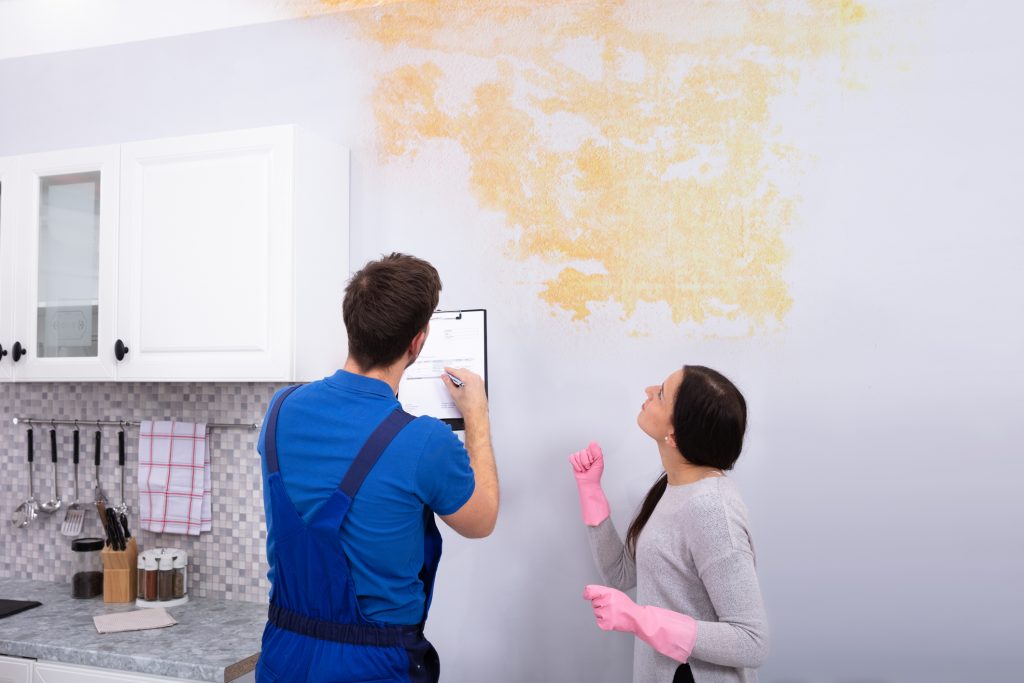While renovating your home may not be top of mind as fall and winter roll around, there are still plenty of updates you may be thinking about. Whether it’s replacing your cabinets, updating the paint in the bathroom, or something smaller like changing the backsplash, there are a lot of factors to consider before starting your next indoor project. After all, you’ll likely be stuck inside while you make some changes to your home; it’s essential to think about those unknown hazards that could be lying underneath that wallpaper.
Mold
No matter how clean you may keep your home, mold can still be present. This is one of the leading causes of respiratory issues. Exposure to mold leads to allergies, postnasal drip, and rashes, and the longer you are exposed, the worse these symptoms can get. The most common form that has to be removed is black mold, but mold will present itself in other forms that can hide from your normal cleaning routine.
While you may find this hazard in your bathroom due to condensation on the walls or leaky plumbing, indoor mold can actually be brought in from the outside; your shoes, the air flowing through the windows, and rain through a small crack in the ceiling can all be ways toxic molds show up in your house.
You may consider replacing plumbing fixtures to avoid some molds, but remember to check other damp spaces, like around your HVAC or air conditioning unit, areas near your windows and roofs, along with the attic and basement.
If you find mold anywhere in your home when starting your next DIY project, make sure to get it tested by a mold expert. Knowing exactly what type of mold is in your home will help guide how you choose to remove the material and prevent it in the future. Since any type of mold is caused by moisture, it would be a good idea to insulate windows and doors before the winter and even place dehumidifiers in areas where moisture is common.
Asbestos
Even though asbestos isn’t widely used today, it can still be found in quite a few places in your home, specifically in areas like your kitchen and bath. Before starting any renovation,, it’s important to check any areas that may still house asbestos.. Older homes built before the 1980s usually have more character, but their age will also come with more hazards, including asbestos.
Used in popcorn ceilings, vinyl tiling in bathrooms and kitchens, and even exteriors like shingles and siding, asbestos is and was used as a fire-resistant material. However, once it deteriorates, it can affect the lungs, causing health issues like mesothelioma, lung cancer, and other long-term respiratory issues. The signs that you have mesothelioma, however, look like that of normal health issues. Coughing, sneezing, and fatigue may be signs of plenty of other diagnoses, and because this form of cancer takes a long time to develop, up to 50 years – it can be hard to receive a diagnosis before it is too late.
A lot of these older homes also don’t have to necessarily disclose asbestos if there’s no sign of deterioration. However, if you plan on renovations or foresee them taking place in the future, it’s best to do some asbestos testing to make sure you and your family stay safe, especially if walls, floors, or other major areas are being taken apart.
Lead
Unlike asbestos, lead does have to be disclosed when selling a home. That being said, often the dangers of lead are similar – they don’t show themselves until deterioration. Home repair activities are where you can start to see health concerns take place. The EPA has an entire page of resources on lead exposure, and in most cases, the best thing to do is to clean regularly to avoid any unnecessary exposure. In more detrimental cases, leaving the home is the best-case scenario.
Believe it or not, lead-based paint can still be found in about 80% of homes today. Because of this, checking for lead in the home can be a key step in starting any project. While the hazards are much more known compared to asbestos and the array of toxic molds, it’s important to still check for dangers that seem elementary. You never know when items like lead paint on walls will start to deteriorate, and even if you decide to cover this up, the disruption of pain on the wall can cause health issues down the line.
If you found that you have lead paint in your home, it would be a good idea to have your household tested for lead poisoning at a regional treatment center. You can never be too safe when it comes to household toxins, especially lead paint.
There are plenty of hazards you’ll find as you start to take a look at your kitchen and bathroom. That being said, there are also plenty of ways to mediate these potential hazards before they go too far. Working with an inspector to test for items like lead and mold can save you money down the line, without putting too much work in before it’s too late. After all, finding out with floors ripped up that mold has to be removed, or that you have to close a room off for asbestos abatement is an obstacle no one wants to face in the middle of a project.


